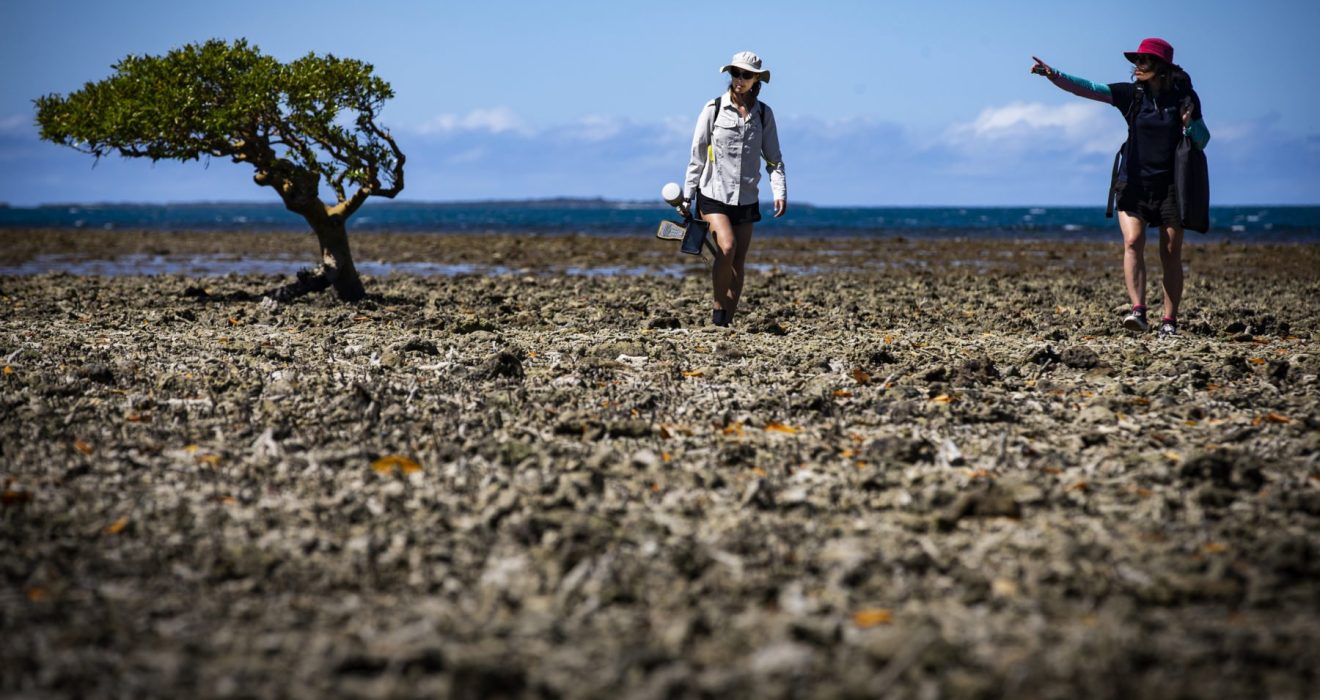The Surprising Story of Howick Islands’ Mangrove Expansion
Nestled off the northern coast of Australia, the Howick Islands emerge as silent witnesses to an extraordinary geological saga that has unfurled over millennia, paving the way for an unexpected ecological spectacle. Recent scientific investigations cast a revealing light on the mangrove forests of this region, challenging prevailing global norms. Contrary to the widespread narrative of mangrove decline in the face of rising sea levels, the Howick Islands have become a haven for these coastal ecosystems, showcasing a surprising and substantial expansion over the past few decades.
What makes this phenomenon all the more intriguing is the seemingly paradoxical role played by the very force that poses a threat to mangroves worldwide – rising sea levels. Typically viewed as harbingers of peril for coastal habitats, the swelling waters surrounding the Howick Islands have emerged as an unlikely ally, fostering an environment conducive to the flourishing growth of mangrove forests. In delving deeper into this ecological enigma, we unravel the intricacies of the islands’ geological history and the unique interplay between nature’s forces, ultimately challenging our understanding of mangrove dynamics on a global scale
The Enigmatic Geologic History of Howick Islands
The foundation of the Howick Islands lies in the skeletal remains of ancient coral reefs, forming the bedrock for these low-lying tropical oases. This geological backdrop, shaped by the ebb and flow of sea levels over thousands of years, has created a unique environment that benefits mangroves. As sea levels rose around 12,000 years ago, coral reefs grew upward, and when they receded, the exposed reefs eroded into sediment. Today, as sea levels raise again, this mixture of saltwater and sediment provides an ideal habitat for the thriving mangrove forests.
Mangrove Expansion Amid Rising Seas
While many regions worldwide grapple with the loss of mangroves due to rising sea levels, the Howick Islands present a different narrative. Researchers, led by environmental scientist Sarah Hamylton, conducted a groundbreaking survey in 2021 – the first in half a century – to understand how mangroves on these islands are responding to the challenge of sea level rise. Contrary to expectations, the study reveals a massive mangrove expansion, challenging the conventional narrative of mangrove loss globally.
The Role of Mangroves in Blue Carbon Sequestration
Mangroves, characterized by diverse plant species adapted to coastal life, play a crucial role in sequestering carbon dioxide. Known as “blue carbon,” this carbon is stored in marine environments, contributing to climate change mitigation. Kerrylee Rogers, an environmental scientist at the University of Wollongong, emphasizes the significance of mangrove blue carbon and the ongoing efforts to harness their potential in combating climate change.
Exploring the Mangrove Biomass Boom
Sarah Hamylton and her team utilized innovative methods, including drone imagery and on-site measurements, to estimate the mangrove biomass on the Howick Islands. The findings indicate a substantial increase, with the islands hosting nearly 54,000 metric tons of mangroves – a significant rise from the 1973 estimate of around 44,000 metric tons. The mangrove forest has not only grown in quantity but has also expanded its reach, covering more hectares on several islands.
The Importance of Mangrove Research
Temilola Fatoyinbo, a forest ecologist at NASA’s Goddard Space Flight Center, underscores the importance of local-scale mangrove research. While global models often focus on mangrove loss, the success story of Howick Islands would be lost in the broader narrative without dedicated local studies. Rogers and Hamylton’s work exemplifies the value of understanding specific ecological dynamics to unravel broader patterns and trends.
The Need for Comprehensive Mangrove Studies
Building on their findings from the Howick Islands, Rogers and Hamylton are embarking on a broader research initiative to study mangroves across Australia. Recognizing the critical role mangroves play in providing blue carbon and protecting shorelines, Rogers emphasizes the need to comprehend the dynamic nature of these ecosystems. Understanding how mangroves adapt to sea level rise is crucial for making informed decisions on future investments and conservation efforts.
Conclusion
The surprising tale of mangrove expansion on the Howick Islands challenges conventional wisdom regarding the impact of rising sea levels on coastal ecosystems. This revelation underscores the remarkable adaptability and resilience of nature when faced with environmental changes. The Howick Islands, with their unique geological history, stand as a testament to the capacity of mangroves to not only endure but thrive in the face of adversity.
As we delve into the intricate relationship between geology, sea level fluctuations, and mangrove resilience, it becomes evident that localized, in-depth research is essential. The call for a nuanced understanding of ecological dynamics resonates beyond the islands, emphasizing the need for comprehensive studies to guide conservation efforts worldwide. The Howick Islands inspire us to approach environmental stewardship with humility, recognizing the intricate balance that sustains our planet. Moving forward, let the resilience of these mangroves serve as a reminder of nature’s ability to adapt and motivate us to protect and preserve our invaluable ecosystems.

